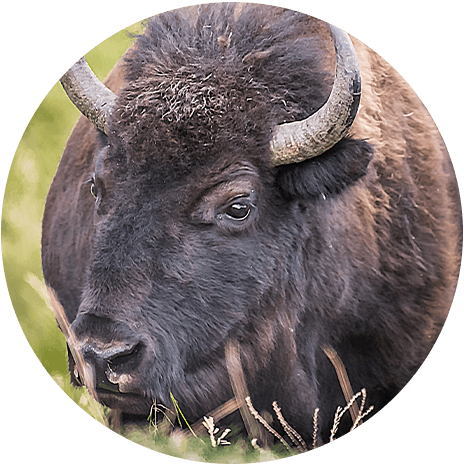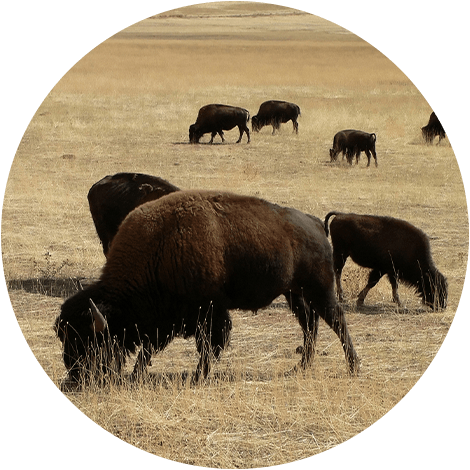Myths & Facts
Buffalo Have Helped Shape Our Culture and Landscape
Many of our Native stories are rich with myths of Buffalo, but there are modern-day myths that we believe are better off dispelled. Here are some of the most common misconceptions and stories about Buffalo.

Myth: Buffalo are carriers of brucellosis, which can be transmitted to cattle.
Brucellosis is a bacterial disease that can cause infertility and scarce milk production in animals, and can be transmitted through infected fetal tissue to other females. While it’s true that some Yellowstone Buffalo test positive for brucellosis, they typically do not suffer from the disease.
Fact: There has never been a documented case of brucellosis being transmitted from Buffalo to cattle in a natural setting.
Myth: Buffalo are an instinctively calm animal that does well with domestication.
Fact: Buffalo have injured more close-wandering pedestrian visitors to Yellowstone National Park than any other animal.


Myth: Bison and buffalo are two different species.
While technically true (the Buffalo of Africa and Asia are different species), the terms are used interchangeably in the US. It is derived from the French word “boeuf,” a name given to the animals when French fur trappers first came across them in the 1600s. Although the name was a mix-up of animals, many Natives still know bison as Buffalo today.
The Shoshone word for Buffalo is Boy-szhan, and the Arapaho word is Hii3einon.
Fact: Many observe ‘bison’ as the scientific term, though Buffalo is more commonly used among Native Tribes.
Myth: Bison eat more grass than other high prairie animals.
Buffalo have four stomachs. While it might seem that Buffalo could eat four times as much as animals with one stomach, it is not the case. Their four-chambered system allows for the absorption of cellulose from plants that is otherwise hard to break down. This, along with their selective grazing habits, makes Buffalo one of the greatest influencers on a healthy prairie ecosystem. Their dung provides rich fertilizer for regrowth where they graze, and their urine returns nitrogen to the soil, promoting further growth.
Fact: As they walk, Buffalo aerate the soil with their powerful hooves. This encourages the growth of new grasses and disperses native seeds.

Learn More About Buffalo
All About Buffalo
History of the Buffalo
Healing with Buffalo
Native Values
Myths & Facts
Science & Research
For Educators
